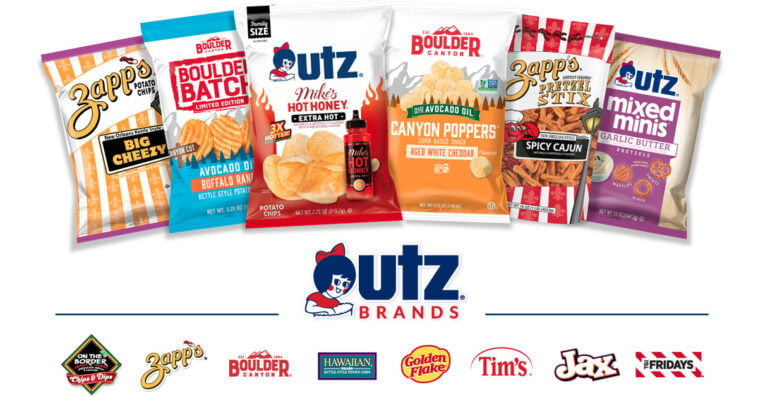Imagine grabbing a bag of your favorite Utz chips or pretzels a few years from now — only this time, without the bright artificial colors you’ve come to expect. That’s the future Utz Brands is working toward, pledging to eliminate synthetic dyes from its entire snack lineup by 2027. With 80% of its portfolio already free from artificial coloring, the company now joins industry heavyweights like Campbell’s, Nestlé, General Mills, and Kraft Heinz in answering rising consumer demand — and mounting pressure from the White House — for cleaner, healthier food options.
Utz Brands embraces clean ingredients with artificial color phase-out
Utz Brands, best known for its potato chips, pretzels, and other salty favorites, is taking a major step toward cleaning up its ingredient list. The company announced that it will phase out artificial colorings across its product portfolio, a move it says is both a nod to shifting consumer expectations and a response to evolving government regulations. With more shoppers seeking transparency and “better-for-you” snack options, Utz sees this transition as an opportunity to reinforce trust and stay relevant in an increasingly health-conscious marketplace.
The 104-year-old company plans to go beyond simply reformulating its products. Beginning this fall, Utz will roll out packaging updates that spotlight what it calls its “real and simple product attributes.” This new branding strategy is designed to make it easier for shoppers to identify which products are free from synthetic dyes, while also reinforcing the company’s commitment to offering snacks made with cleaner, straightforward ingredients. For Utz, the packaging shift is just as important as the recipe changes, signaling to consumers that the brand is evolving without losing sight of its heritage.=
Utz is not alone in this push. Industry giants across the snack aisle are charting a similar course toward natural reformulations. PepsiCo, for example, has announced that it will introduce versions of Cheetos and other household favorites that are made without artificial colors and flavors. At the same time, the company is repositioning key brands like Lay’s and Tostitos, placing greater emphasis on their lack of synthetic additives. By showcasing these changes, PepsiCo aims to capture a growing base of consumers who prioritize ingredient simplicity, even in indulgent snack foods.
The broader trend reflects a fundamental shift in the way Americans approach snacking. Where bold colors and over-the-top flavors once defined the category, today’s shoppers are looking for balance — snacks that satisfy cravings without compromising on perceived health or authenticity. By aligning with this shift, companies like Utz and PepsiCo are not only protecting their brand relevance but also setting themselves up for growth in a competitive landscape. For consumers, the move means more choices that better reflect their evolving values, all while keeping the familiar crunch and flavor they already love.
Kennedy leads push for food companies to eliminate artificial colors
Health and Human Services Secretary Robert F. Kennedy Jr. has intensified his campaign to encourage food manufacturers to move away from synthetic dyes — and the effort is showing results. Despite not having clear legal authority to mandate these changes, Kennedy’s push has already prompted several companies to pledge voluntary action. The initiative reflects growing public pressure to reduce artificial additives in food products, particularly those consumed by children.
At the center of the initiative are six widely used synthetic dyes that have long sparked health debates: Red No. 40, Yellow No. 5, Yellow No. 6, Blue No. 1, Blue No. 2, and Green No. 3. These colors, found in everything from candies and cereals to beverages and snack foods, have been criticized by health advocates for their potential links to hyperactivity in children and other health concerns. Food companies are now committing to replace these artificial ingredients with natural alternatives such as beet juice, turmeric, paprika, and spirulina extracts.
One key detail emerging from these commitments is the range of timelines companies have set for their transitions. While some brands are moving quickly, most have outlined plans to remove the six synthetic dyes by 2026 or 2027. This gradual shift allows businesses time to adjust supply chains, secure reliable natural dye sources, and test reformulations that preserve the familiar taste and appearance consumers expect. The varied timelines highlight both the complexity of the change and the industry’s cautious but deliberate response.
Beyond the specifics of dye removal, the movement signals a larger transformation in how food companies approach product development. Natural ingredients, transparency in labeling, and consumer health are becoming central to brand identity.
Source: Food Dive

